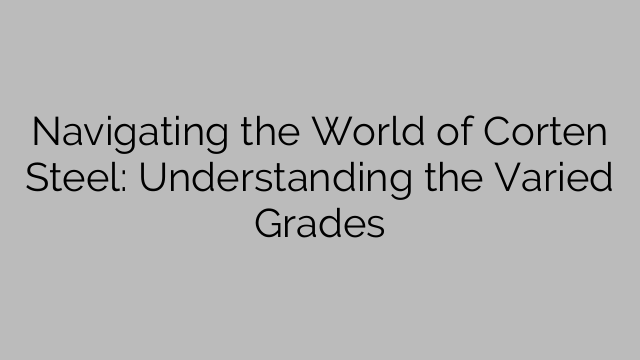One aspect of Corten steel that can be confusing to navigate is the various grades available. Each grade offers different properties that make it suitable for specific applications, and understanding these variations can help ensure the best choice of Corten steel for your project.
The most commonly used grades of Corten steel are ASTM A588 and ASTM A242. Both grades are high-strength low-alloy structural steel, but they differ in their chemical composition and mechanical properties. ASTM A588 is known for its superior corrosion resistance and is primarily used for architectural and structural applications. On the other hand, ASTM A242 is characterized by its high yield strength and is commonly utilized for bridge construction and heavy-duty applications.
Another grade worth mentioning is Corten B. While similar to ASTM A588, Corten B offers slightly different chemical composition, which results in improved mechanical properties and resistance to atmospheric corrosion. This makes Corten B an excellent choice for outdoor sculptures and other artistic installations.
One consideration when choosing a Corten steel grade is the expected rust color. Over time, Corten steel forms a protective layer of rust that not only acts as a barrier against further corrosion but also provides a unique reddish-brown appearance. This color can vary depending on the specific grade of Corten steel used. For instance, ASTM A588 typically develops a deep, rich rust color, while Corten B tends to produce a lighter, more orange-toned rust finish.
It’s essential to note that Corten steel is not suitable for every application. While its weathering properties make it ideal for outdoor structures and art installations, it may not be the best choice for environments that involve standing water or extreme salt exposure, as these conditions can accelerate corrosion. In such cases, stainless steel or other corrosion-resistant alloys may be more appropriate.
To ensure the best results when working with Corten steel, it’s crucial to consult with a knowledgeable supplier or engineer who can guide you through the selection process. They can help you determine the specific grade of Corten steel that suits your needs and provide recommendations on design, fabrication, and installation methods.
In conclusion, Corten steel offers a unique combination of aesthetic appeal and durability, making it a sought-after material for an array of applications. Understanding the various grades available, such as ASTM A588, ASTM A242, and Corten B, can help you make an informed decision that suits your specific project requirements. By working with experienced professionals, you can navigate the world of Corten steel with confidence, ensuring a successful outcome for your next construction or design endeavor.
[anúncio_2]

